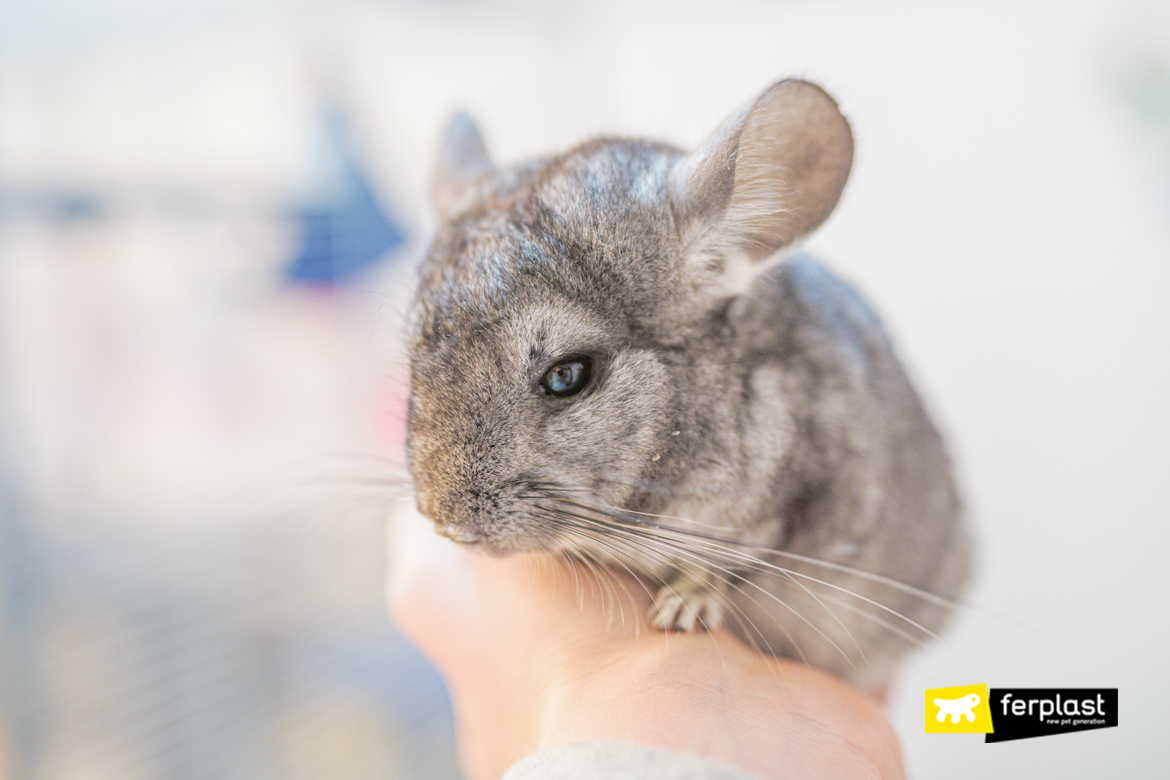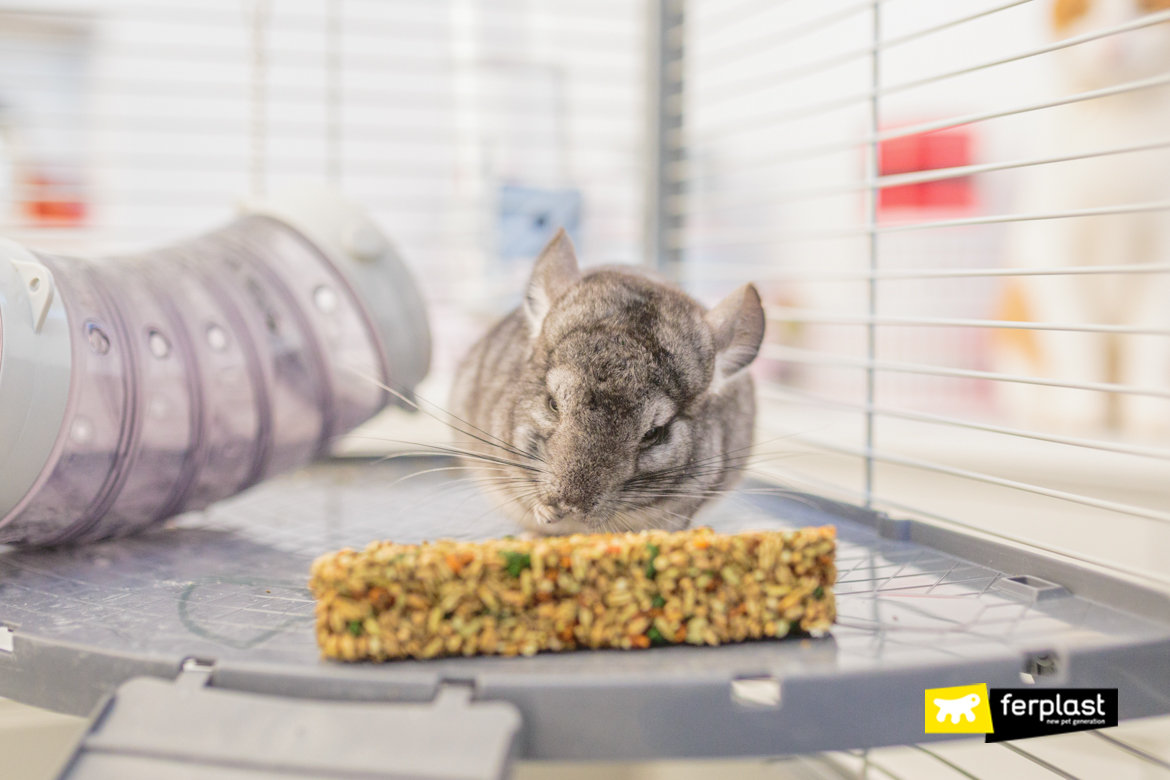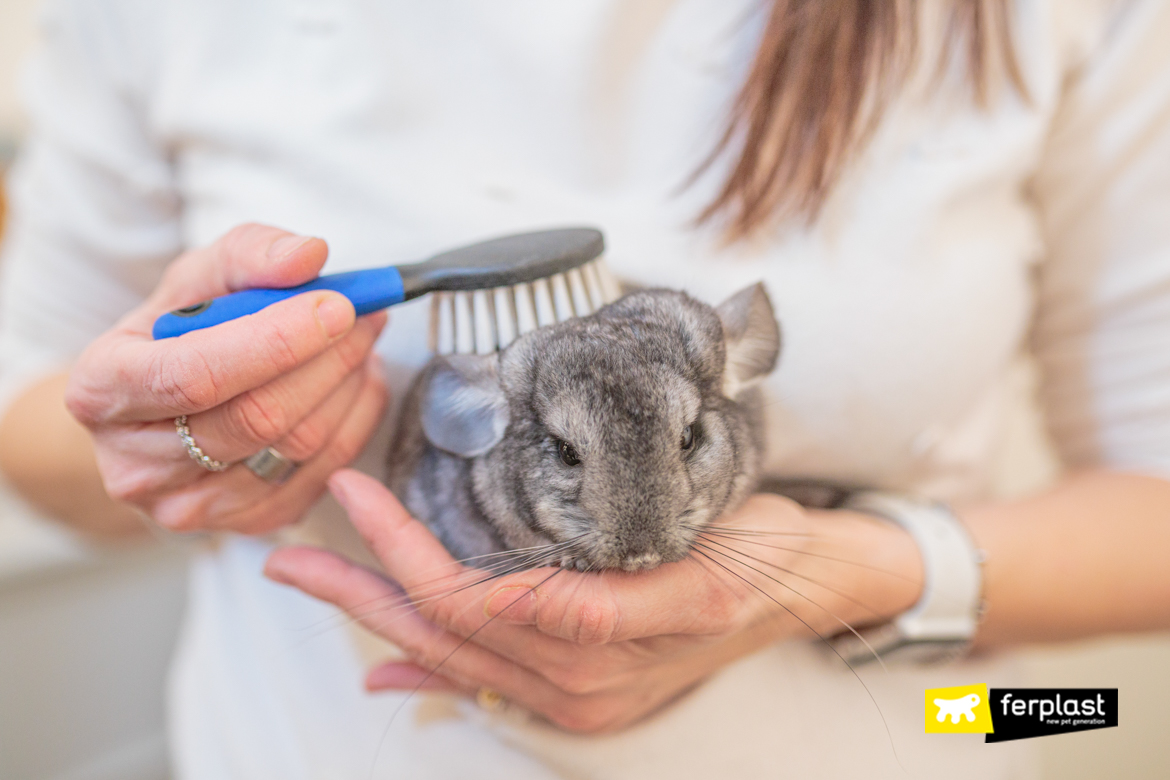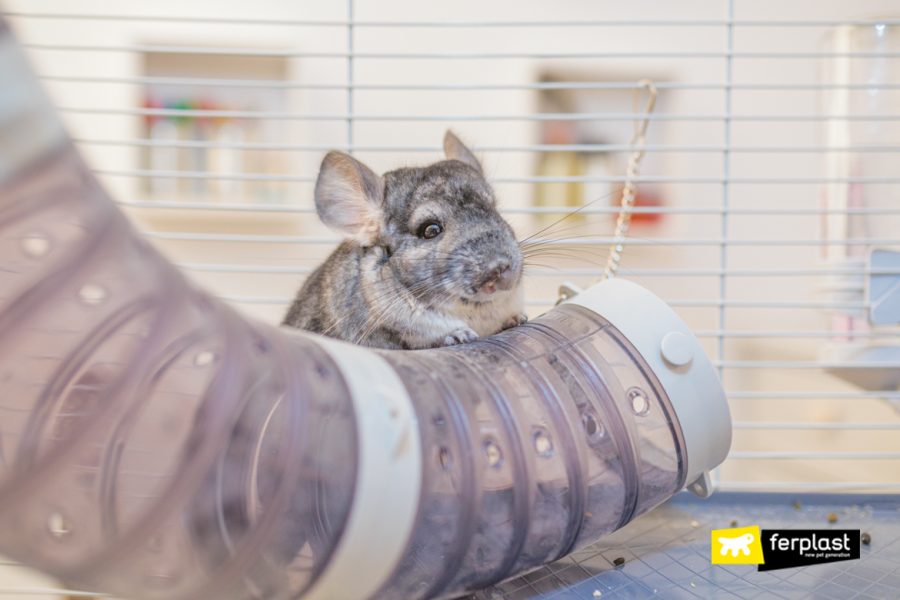Until recently, chinchillas were mostly known for their soft fur. Now that finally the breeding of fur specimens has been stopped, it is increasingly appreciated as a pet.
Docile, clean and affectionate, chinchillas are nice rodents that deserve a habitat suitable for their needs.
Origins of the chinchilla
Chinchillas belong to the rodent category. They are originally from South America, mainly from the Andes area. Their thick fur allows, in the wild, to survive the freezing mountain temperatures. Two species of chinchilla exist in nature, the short-tailed Chinchilla Chinchilla, and the long-tailed Chinchilla Lanígera, from which over twenty mutations of domestic chinchilla descend. Their domestication began in the early twentieth century with the sad goal of fur market.
Characteristics of the chinchilla
Physical characteristics
The peculiarity of chinchillas lies in their dense and soft coat. Consider that each follicle contains about fifty hairs, limiting transpiration. The hair structure of the chinchilla is very fragile, an important characteristic in nature, as it allows them to escape more easily from predators. Adult males weigh about 600 grams. Females, on the other hand, weigh 800 grams. Compared to wild specimens, domestic chinchillas are larger and can grow to the size of a dwarf bunny. The paws have atrophied toes without claws, four in the front and three in the hind legs.
Behavioral characteristics
Domestic chinchillas are very sociable, sweet and affectionate. These animals love to be petted and pampered, although too much petting can cause excessive hair loss. They are particularly intelligent, they recognize the owner and are able to communicate their moods with squeaks and small bites. Just like rabbits, chinchillas are crepuscular animals, which eat and play mostly in the evening and early morning.
From the point of view of nutrition, they are essentially herbivores and feed on vegetables.
The Ideal habitat for the domestic chinchilla
Chinchillas are excellent climbers, keen to jump and run quickly, for this reason their home must develop in height and be spacious enough, at least 80x50x100, to allow them to move freely. The cage, however, is just a den. Chinchillas should live mostly close to the pet parent and outside the cage. In any case, it is essential for them to have one as a place of refuge, to be placed in a cool and dry area of the house. Chinchilla, in fact, fear both heat stroke and wind blows.
Among Ferplast cages, the most suitable for chinchillas’ needs is the Furet Tower. This habitat consists of two floors and is made of metal mesh treated with non-toxic anticorrosion paint. It has three entrance doors, two side (one per floor) and one at the top, equipped with safety locks. It is complete with feeder, drinking bottle, corner toilet, hammock, set of pipes, shelves and ladders. Fresh water must never be lacking in the cage, to be changed at least once every two days, in summer, however, every day.
The importance of exercise
The presence of tunnels and ladders is essential for a chinchilla cage. These are animals full of energy, especially during the evening hours. The tubes not only stimulate curiosity, but allow them to jump and run around from one side of the cage to the other. They also serve as a den and hiding place. Chinchillas love to hide in fairly small places.
Precisely for the tendency to jump, they are similar chipmunks. To satisfy their desire for fun, therefore, it may be useful to insert a metal chipmunks wheel that hooks to the cage, larger than the one for hamsters.
The importance of cleaning
The chinchilla is a very clean animal that takes care of its own hygiene. It is not necessary to wash it with water, because its hair is very difficult to dry, as it does not have waterproofing grease. To wash, he takes sand baths, which make his coat shiny and healthy. It is important that there is a bowl filled with sand mixed with talc in the cage, where the animal can clean it several times a day.
Among rodents, the chinchilla is the longest-lived pet animal, as it can live up to fifteen years or more. To ensure this all-furred beast to have a long and happy life, it is necessary to arrange everything necessary for its well-being. Having a playmate with whom to share the living space, as happens in nature, can help in the goal.

